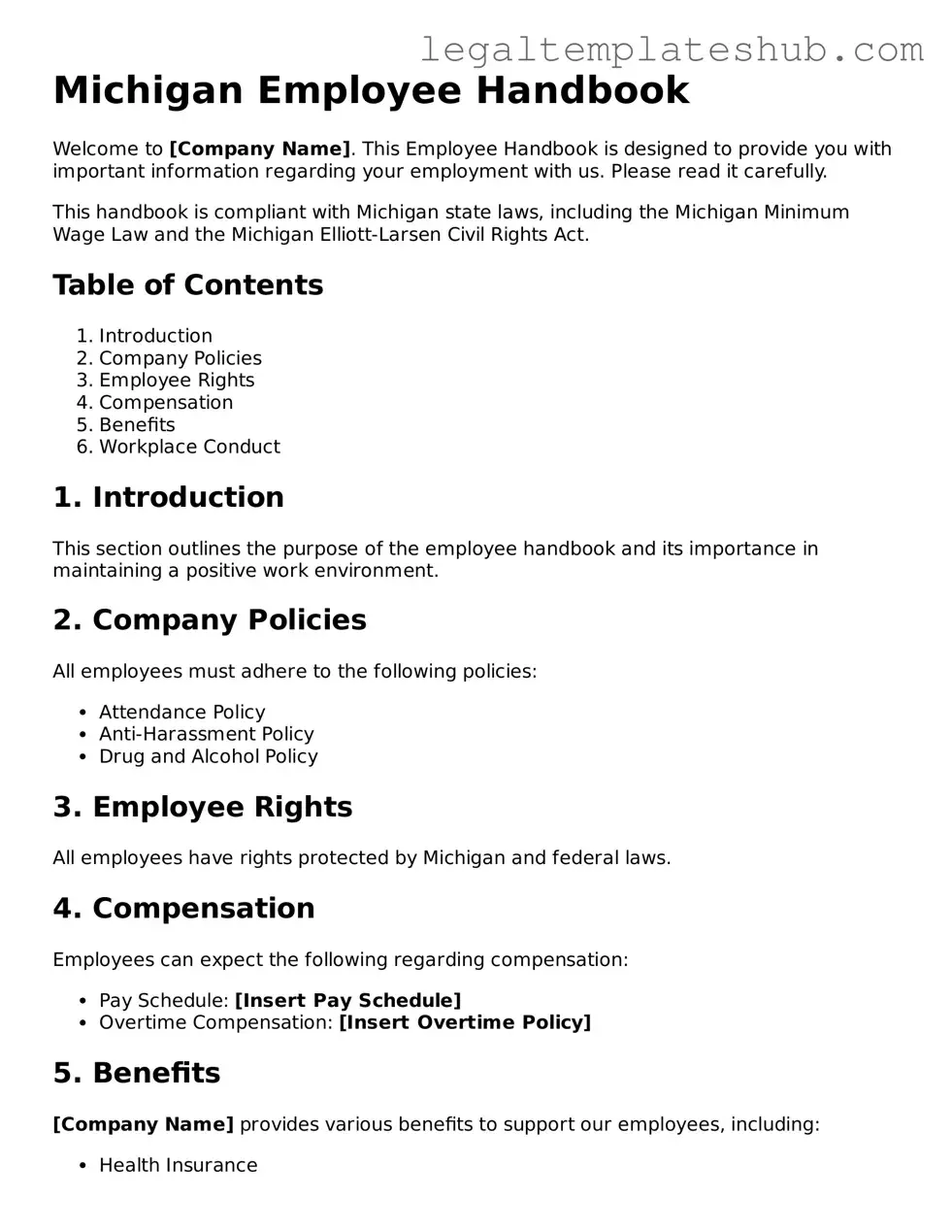Printable Employee Handbook Document for Michigan
The Michigan Employee Handbook form serves as a crucial document that outlines workplace policies, procedures, and expectations for employees within the state. This form not only fosters a clear understanding of rights and responsibilities but also helps ensure compliance with state and federal regulations. To effectively communicate these essential guidelines, it is imperative that employers fill out the form accurately and thoroughly.
Take the first step in creating a transparent workplace environment. Fill out the Michigan Employee Handbook form by clicking the button below.
Access Editor
